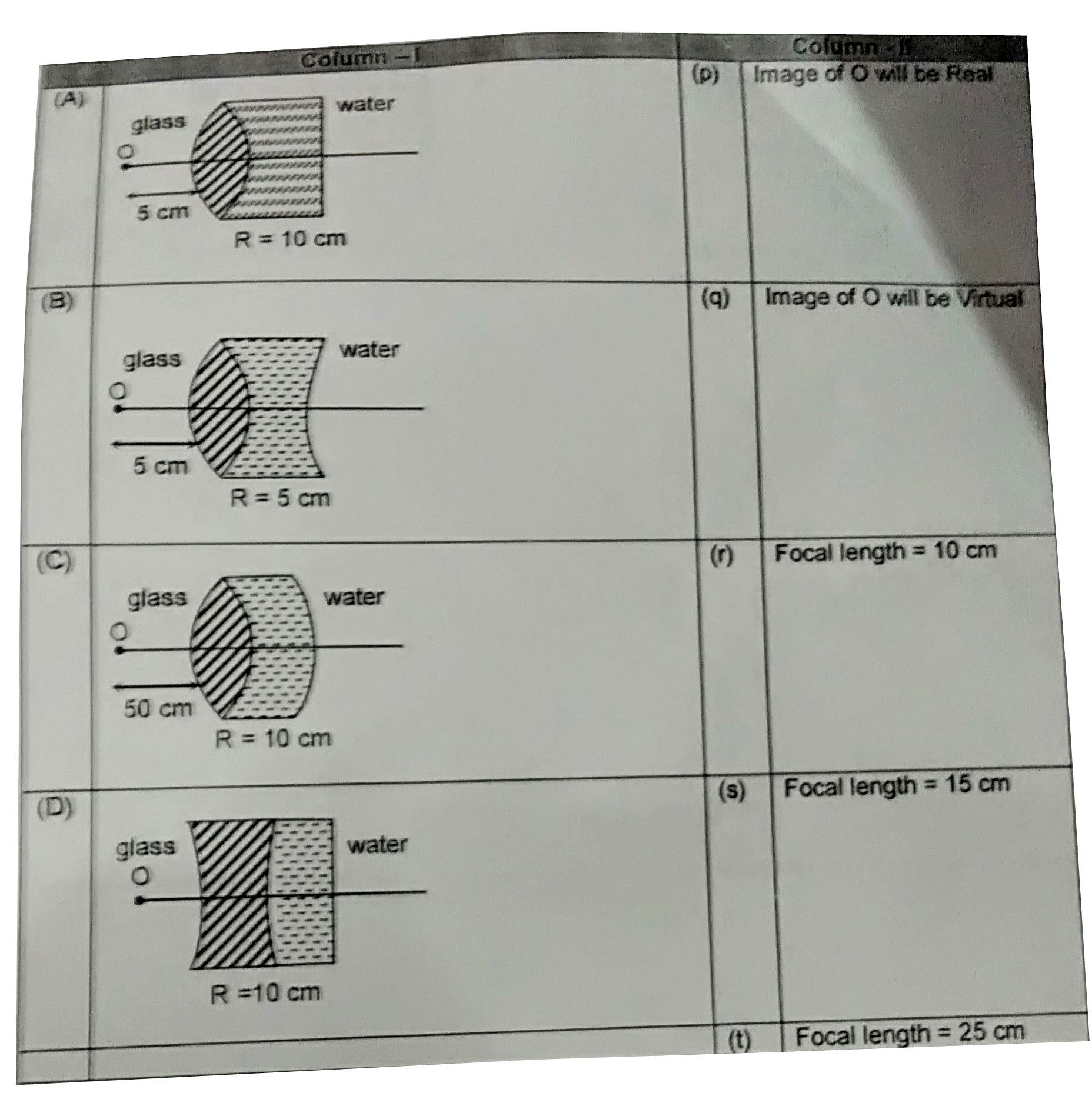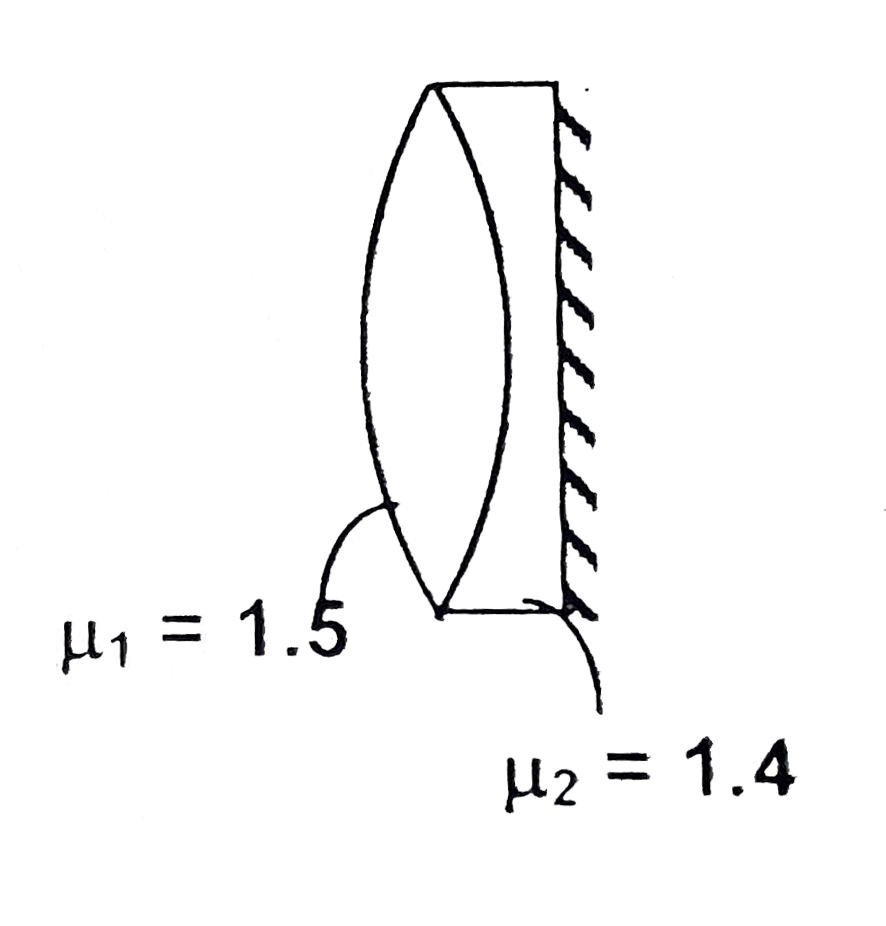Two thin lens made of glass (μ=32) and water (μ=43) kept in contact with each other. An object is placed at point O . Assume all curved surfaces have equal radius.
Match the following Columns:

The correct Answer is:A, B, C, D
Use concept of combination of lenses.
Topper's Solved these Questions
- TEST PAPERSBOOK - FIITJEECHAPTER - TEST PAPERSEXERCISE - PHYSICS
747 Videos
- SIMPLE HARMONIC MOTIONBOOK - FIITJEECHAPTER - SIMPLE HARMONIC MOTIONEXERCISE - Assignment Problems (Objective) (Level-II)
20 Videos
- WORK, ENERGY AND POWER BOOK - FIITJEECHAPTER - WORK, ENERGY AND POWER EXERCISE - COMPREHENSIONS ( Comprehension-II)
5 Videos
Similar Questions
A biconvex lens of focal length 20cm, made of glass or refractive index 1.5, has water (μ=1.33) on one side and air on the other. An object is placed 15 cm form the lens on the side with water. Where is the image formed?
View SolutionThe focal length of a convex lens of glass (μ=1.5) in air is 30 cm. Find its focal length when the lens is placed in water (μ=4/3).
View Solution
Knowledge Check
A double convex lens made of glass (μ=1.5) is immersed in water (μ=4/3). If its focal length in air is 'F', then the focal length in water will be :
AFBF/2C2FD4FA convex lens made of glass (μg=3/2) has focal length f in air. The image of an object placed in front of it is inverted, real and magnified. Now the whole arrangement distance between object and lens. Then
Athe new focal length will becom 4fBthe new focal length will become f/4Cnew image will be virtual and magnifiedDnew image will be real, inverted and smaller in sizeFigure shows an object 'o' placed in front of a biconvex lens (μ=32) behind which there is water (μ=43) and a plane mirror at a distanc eoff 20m. A point object 'O' is placed at a distance of 45cm from the lens as shown in the figure. The position of the image of the object coincides with the object itself, then radius of curvature of the lens is
 A20cmB45cmC60cmD30cm
A20cmB45cmC60cmD30cm
[" A thin prism of crown glass "(mu_(r)=1.515,mu_(V)=1.525)" and a "],[" thin prism of flint glass "(mu_(r)=1.612,mu_(V)=1.632)" are placed "],[" in contact with each other.Their refracting angles are "5^(@)],[" each and are similarly directed.Calculate the angular "],[" dispersion produced by the combination."],[[" (1) "0.15^(@)],[" (2) "0.2^(@)],[" (3) "025^(@)],[" (4) "0.3^(@)]]
View SolutionA thin convex lens has focal length f1 and a concave lens has focal length f2. They are kept in contact. Now, match the following two columns.

View SolutionA convex lens made of glass (μg= 3/2) has focal length f in air. The image of an object placed . infront of it is inverted real and magnified. Now the whole arrangement is immersed in water (μw = 4/3) without changing the distance between object and lens. Then
View SolutionA thin equiconvex glass lens (μ1=1.5) of radius of curvature 'R' and a thin plano-concave lens (μ2=1.4) are kept in contact and the plane surface is silvered. This lens system is placed in air. When a point object is placed at a distance 20cm from the lens system on its principal axis, the image formed by the lens system coincides with the object. Then the value of radius of curvature 'R' is

View SolutionThere is an equiconcave glass lens with radius of each face as R and .aμg=3/2 and .aμW=4/3 . If there is water in object space and air in image space, then the focal length is
View Solution